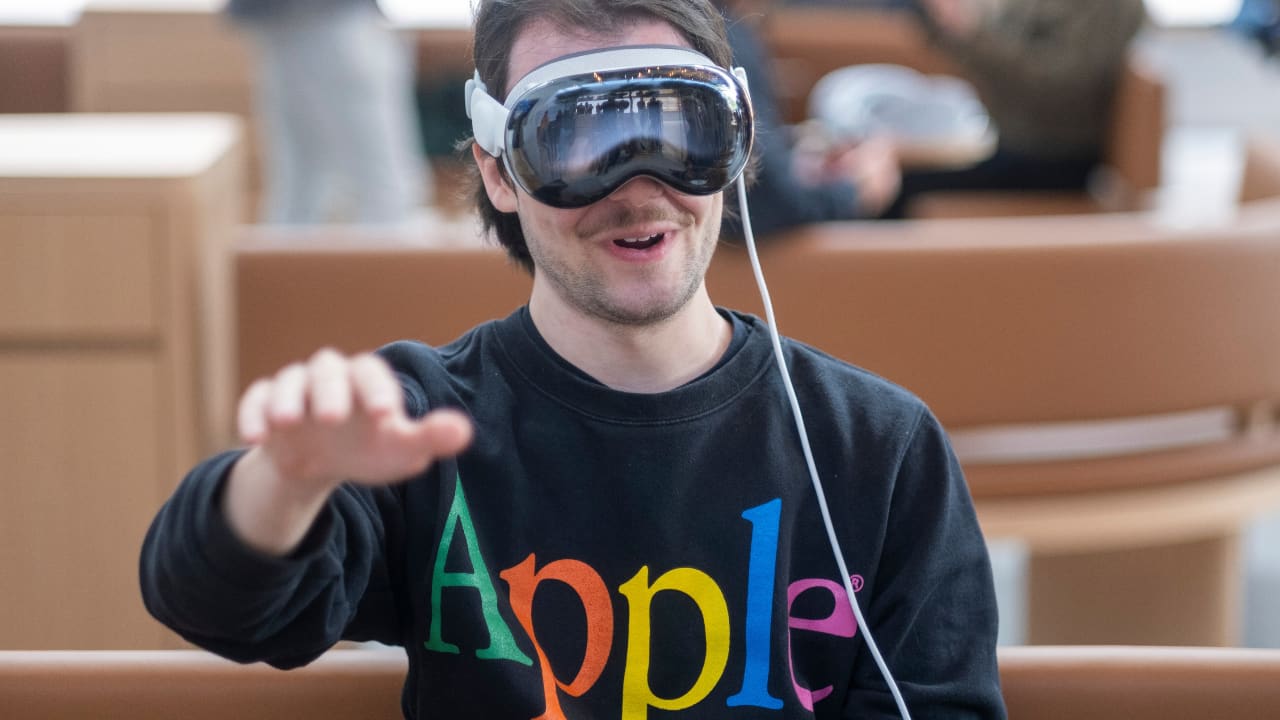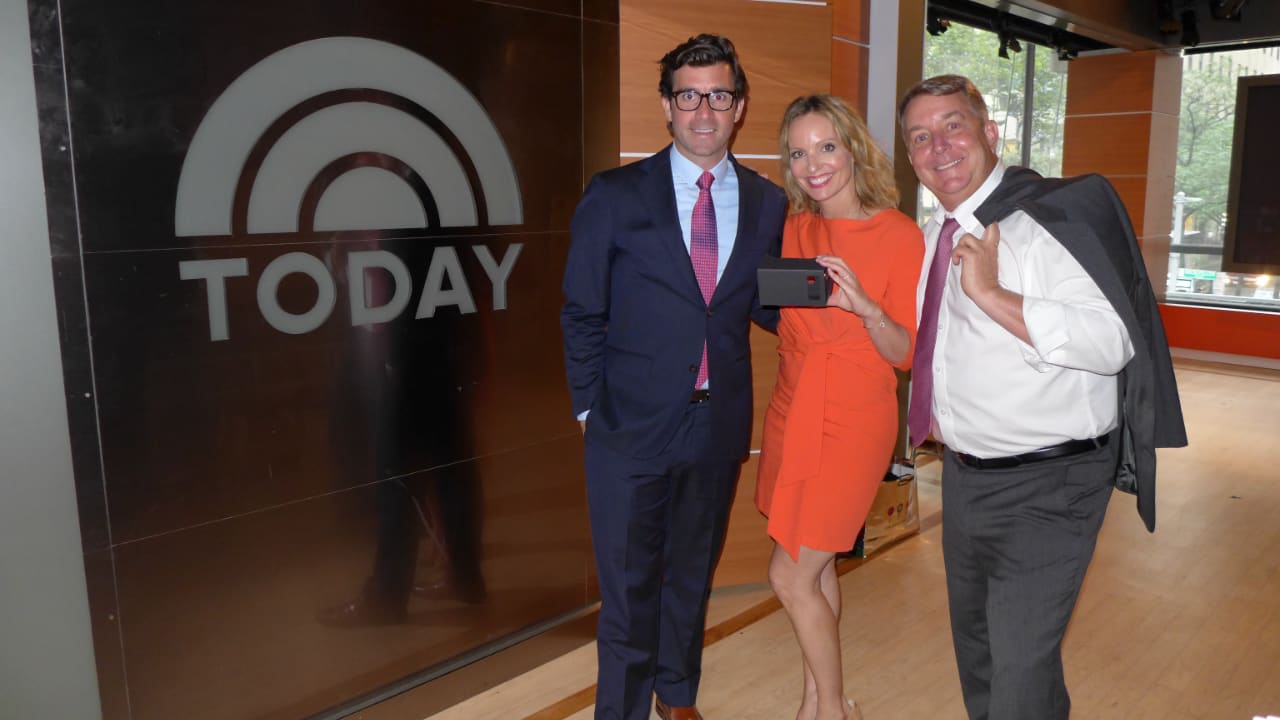
The Apple Vision Pro isn't the first augmented reality headset. Other big tech giants have been there before , but Alteon.io CEO, Matt Cimaglia, reckons February 2, 2024, was the dawn of a new era.
In 2015, I teamed up with my friend, Florida-based news correspondent Kerry Sanders, to pitch an audacious idea to the executives, producers and techs at The Today Show: virtual reality. Back then, this technology was little more than a futuristic curiosity, something that seemed more at home in a sci-fi novel than our everyday lives. But I envisioned a different future, one where VR and its cousin, augmented reality, would transform the way we engage with media, evolving storytelling into an immersive, interactive narrative experience.

Matt Cimaglia, Mary Ann Zoellner, and Kerry Sanders holding a Google Cardboard at the Today Show Studios, 30 Rockefeller Plaza, in July 2015
Fast-forward to June 2023, when Apple announced Vision Pro. This isn’t the first AR headset—Meta, Google, Magic Leap and Microsoft, among others, have already made forays into this virtual world. But Apple, being Apple, has elevated the market. No doubt this is the beginning of a new era of mixed reality, in which this kind of technology will, over several years, become more affordable, mainstream and critical to our daily lives
The reviews are coming in
Since being released last week, the Vision Pro has garnered incredible reviews from top influencers like Casey Neistat, iJustine, and Marques Brownlee. Their collective enthusiasm underscores a key insight: we are only beginning to scratch the surface of AR's potential. These influencers highlight how the current capabilities of the Vision Pro, as impressive as they are, represent just the starting point for a much broader exploration into augmented reality. They point to the anticipation of new applications and the expansion of spatial video as pivotal developments that will deepen and enrich our engagement with this technology. This unanimous perspective from leading tech voices not only validates the immediate impact of the Vision Pro but also hints at the vast, untapped possibilities that lie ahead as more applications are released and the adoption of spatial video becomes more widespread. Their reviews serve as both an endorsement of the device's current state and a forward-looking statement on the evolution of AR technology, suggesting an exciting trajectory for how we interact with and shape our digital and physical worlds.
While the future is impossible to predict, it’s easy to see real-world use cases for augmented reality. (To be clear, virtual reality—in which you “exist” within a totally 3D computer-generated world—is still farther off.) Media and entertainment may be the most obvious one, allowing Vision Pro users to experience surround sound and cinema-quality video without even needing a TV. In a world where the Vision Pro costs as much as a smartphone—between $500 and $1,000—it’s conceivable that each family member will one day own one, hosting a “teleparty” to sync shows and movies on major streaming services, so everyone can sit and enjoy content together, whether sitting on the same couch or hundreds of miles away. In a few decades, television sets could become obsolete: why would a high-earner living alone in a 500-square-foot downtown condo want to spend $1,000 on a decent 60-inch TV when they could get superior immersive technology for the same price?
That reality is years away, of course. In the meantime, there will be challenges. Affordability is one—although this will always be a nice-to-have luxury item, and it will likely drop in price. (Remember, the first VCR retailed for up to $1,400 in 1977; adjusting for inflation today, that would cost more than $7,000.)
The need for content
A bigger concern will be justifying the cost. Why spend $3,500 on a device if there isn’t enough content? This mirrors the initial struggles faced by previous innovations, including the iPhone and, even more simply, HDTVs. New hardware needs time to build content libraries from the ground up. In the meantime, consumers will be hesitant to buy in.
It was encouraging, then, to see Apple connect with Disney, a brand renowned for embracing new technologies. In Apple’s unveiling video, Disney CEO Bob Iger announced plans to launch a selection of augmented content via Disney+ in tandem with the release of the Vision Pro. In addition to immersing yourself in the fantastical worlds of Star Wars and Pixar, AR will also have a significant impact on Disney brands such as ESPN and National Geographic, bringing audiences closer than ever to pro athletes and wildlife. Like video games have done before, this could transform media from a passive medium to an active one, inviting participation and audience engagement, rather than simply watching stories unfold before you.
The convergence of technology and narrative that we’re witnessing is an exciting harbinger of the future of storytelling. We're stepping into an era where boundaries will blur—between physical and digital, passive and active, 3D and 2D. As creators, this new technology offers a palette of tools that can redefine narrative crafting. As audiences, we’re on the brink of a significant shift in how we interact with and shape our stories.
The ongoing commitment of industry leaders like Apple, storytelling pioneers like Disney and innovative content creators is setting the stage for this exciting future. As we stand on this threshold, let’s embrace the promise of augmented reality and all the uncharted narrative possibilities it holds. The journey is only just beginning, and I look forward to the creative revolution it will undoubtedly inspire.
Tags: Technology


Comments